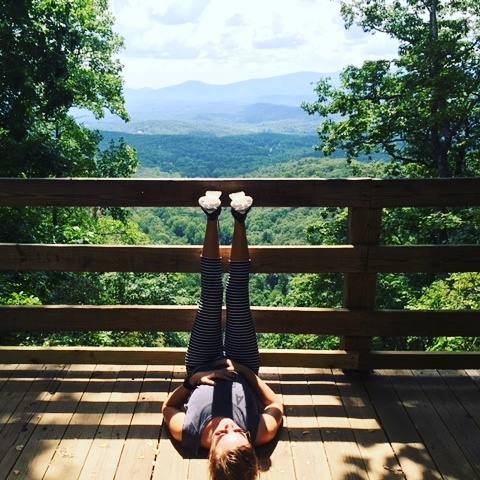
our wisdom
Trauma Informed Yoga for Self-Regulation
Trauma informed yoga for self-regulation
Self-regulation refers to our ability to manage and control our thoughts, emotions, and behaviors in response to different situations. It involves maintaining a sense of equilibrium, even amidst external stressors or internal challenges. Self-regulation empowers us to navigate through life's ups and downs with composure, resilience, and adaptability.
Yoga practice can be the most accessible tool that we can use to self-regulate.
Check out a 30-minute yoga practice with me that can serve as a helpful tool amidst chaotic time.
Trauma-informed yoga for self-regulation.
Discover the Deep Relaxation and Healing Benefits of Yoga Nidra
Yoga Nidra is a guided meditation technique that promotes deep relaxation and stress reduction. Scientific studies have shown that regular practice of yoga nidra can improve overall well-being, cognitive function, and immune system function, as well as treat conditions such as PTSD and chronic pain. This post explores the benefits of yoga nidra and provides tips on how to practice it effectively.
Yoga Nidra is a form of guided relaxation and meditation that is often referred to as "yogic sleep." It is a technique that allows the body and mind to completely relax while remaining conscious and aware.
During a Yoga Nidra practice, participants lie down comfortably and follow the guidance of a facilitator. Yoga Nidra facilitator will lead everyone through a series of visualizations and body awareness exercises, breathwork, visualization, and relaxation techniques, designed to induce a state of deep relaxation and heightened awareness.
Yoga nidra practice has been scientifically proven to have many benefits for both physical and mental health. Studies have shown that regular practice of yoga nidra can reduce stress, anxiety, depression, and insomnia, as well as improve overall well-being, cognitive function, and immune system function. Additionally, yoga nidra has been used as a therapeutic tool to treat conditions such as PTSD, chronic pain, and substance abuse.
If you are interested in giving Yoga Nidra practice a go click here to experience a 10-minute Yoga Nidra To Reset The Nervous System.
Here are some sources for the benefits of yoga nidra studies:
Yoga Nidra as a Therapeutic Intervention for Military Veterans with PTSD: A Randomized Controlled Trial. Journal of Clinical Psychology, 2014. https://onlinelibrary.wiley.com/doi/abs/10.1002/jclp.22081
Yoga Nidra relaxation increases heart rate variability and is unaffected by a prior bout of Hatha yoga. Journal of Alternative and Complementary Medicine, 2011. https://www.ncbi.nlm.nih.gov/pmc/articles/PMC3151418/
Exploring the Therapeutic Effects of Yoga Nidra on Chronic Pain: A Clinical Case Series. International Journal of Yoga Therapy, 2018. https://www.ncbi.nlm.nih.gov/pmc/articles/PMC6390488/
Effect of Yoga Nidra on Blood Glucose Level in Diabetic Patients. International Journal of Yoga, 2013. https://www.ncbi.nlm.nih.gov/pmc/articles/PMC3887506/
Effects of yoga nidra on psychological general well-being in patients with menstrual disorders: a randomized controlled trial. International Journal of Yoga, 2021. https://pubmed.ncbi.nlm.nih.gov/34084363/
Irina
Legs Up the Wall: The Ultimate Relaxation Posture
If you practice one yoga posture a day practice this one
Have you heard of Legs Up the Wall (Viparita Karani) pose? It's a restorative yoga posture that can bring about deep relaxation and help with stress relief. Even better, this pose has amazing benefits for your lower back health! Let's take a look at what Viparita Karani is all about.
What is Legs Up the Wall?
Legs Up the Wall (Viparita Karani) is a gentle inversion pose that helps to relieve stress and promote relaxation. To practice this pose, you will need something to prop up your legs (like a wall or chair) and a yoga mat or blanket for support. Once you are ready, lie on your back and place your legs against the wall, making sure that your hips are close to the wall. You can also place a cushion or bolster under your hips for added comfort. Relax into this posture for at least five minutes and breathe comfortably. This quick practice will help to reduce stress, calm your mind, and improve circulation throughout your body.
Lower Back Health Benefits of Viparita Karani
This restorative yoga posture can also be beneficial for lower back health as it helps to stretch out tight muscles surrounding the back area. By stretching out these muscles, Viparita Karani can help to alleviate lower back pain and tension while promoting blood flow in the area. It can also help improve flexibility in your hips and spine which can further reduce lower back discomfort over time.
Viparita Karani is an incredibly versatile pose that offers numerous benefits both physically and mentally! Not only does it promote relaxation by calming the mind, but it can also provide relief from lower back pain while improving overall flexibility in the hips and spine. So if you’re looking for an easy way to unwind after a long day or just want to take some time for self-care, don’t forget about Legs Up the Wall! Give it a try today!






